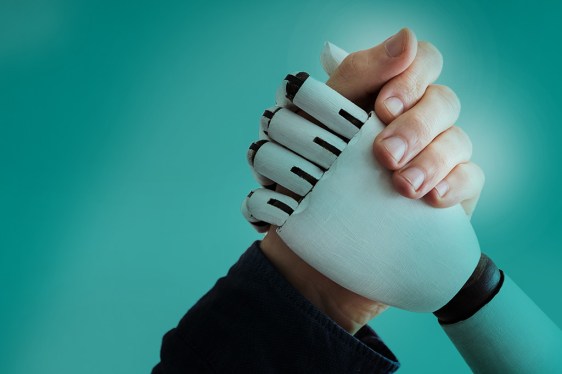AI Revolution: What Human Workers Can Expect in a Robot-Driven World

The ongoing transformation in the tech industry has sparked varied opinions on the role of human workers in an increasingly AI-driven landscape. On one side, there’s the belief that robots will take over most jobs, leaving many workers behind. On the other hand, a more optimistic view suggests that while robots handle mundane tasks, new opportunities will arise for humans, supported by historical trends in technological advancement.
According to the World Economic Forum, while an estimated 92 million jobs may disappear due to automation, around 170 million new roles are expected to emerge. Many unskilled workers, particularly those in positions like warehouse labor, might wonder what this future holds for them amid the rise of robots.
Recently, Amazon provided insights into this transition with the introduction of its innovative Vulcan robot, designed to assist warehouse staff by performing physically demanding tasks. In a social media announcement, Amazon’s CEO Andy Jassy explained how Vulcan not only supports workers by alleviating their workload but also helps them upskill in areas like robotics maintenance.
In its promotional material, Amazon highlighted that Vulcan’s deployment would change how warehouse tasks are executed. By empowering robots to reach high shelves or access hard-to-reach items, human coworkers can focus on the middle shelves and use their skills where the technology falls short. Furthermore, Amazon aims to retrain a subset of its warehouse workers to become technicians for these advanced machines.
While these robots are projected to assist in fulfilling a significant portion of customer orders, not every human role in warehouses will convert directly to a tech-focused position. The pathway to becoming a robot technician won’t suit everyone, illustrating the complexity of transitioning to this new job landscape.
As Amazon notes, these robots have opened new job categories, such as robotics monitoring and maintenance positions, which were previously non-existent. The announcement of the retraining programs is particularly crucial given the lack of clear trends for displaced workers in a future dominated by AI. Some experts speculate that the future may consist of roles like “automation supervisors” who oversee robotic operations, akin to how clerks currently manage self-checkout systems.
However, there’s skepticism surrounding the idea of a fully automated workforce. High-tech solutions may only be practical for large corporations, while traditional roles in various industries, including retail and food service, continue to be held by people for years to come.
Moreover, Amazon’s past attempts to expand its cashier-less technology indicate that even cutting-edge innovations face challenges in broader acceptance and feasibility in everyday scenarios. The tech giant’s strategy to introduce its automation in broader retail sectors hasn’t seen universal interest, showing that complete automation may not be as imminent or comprehensive as some predict.
